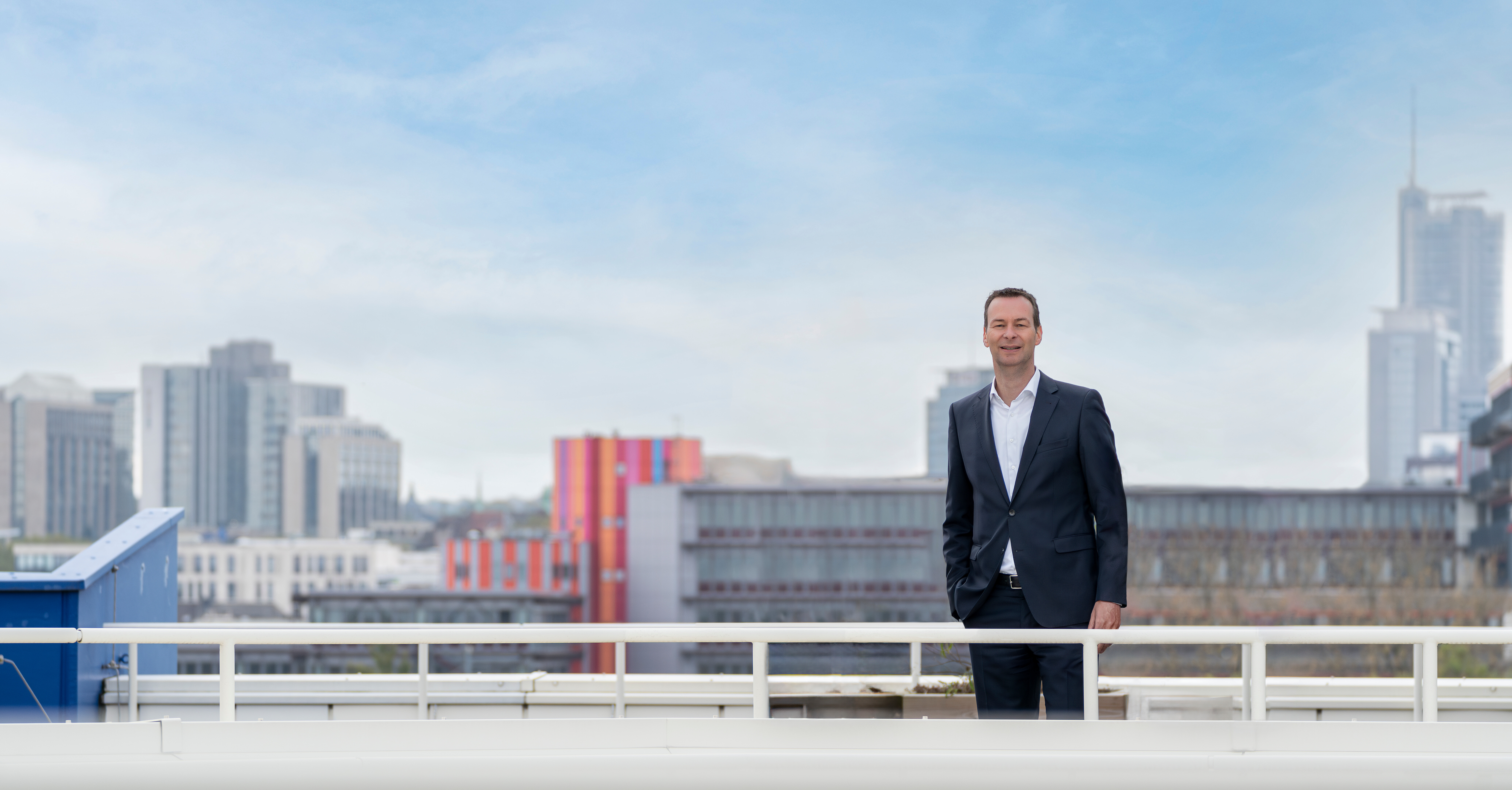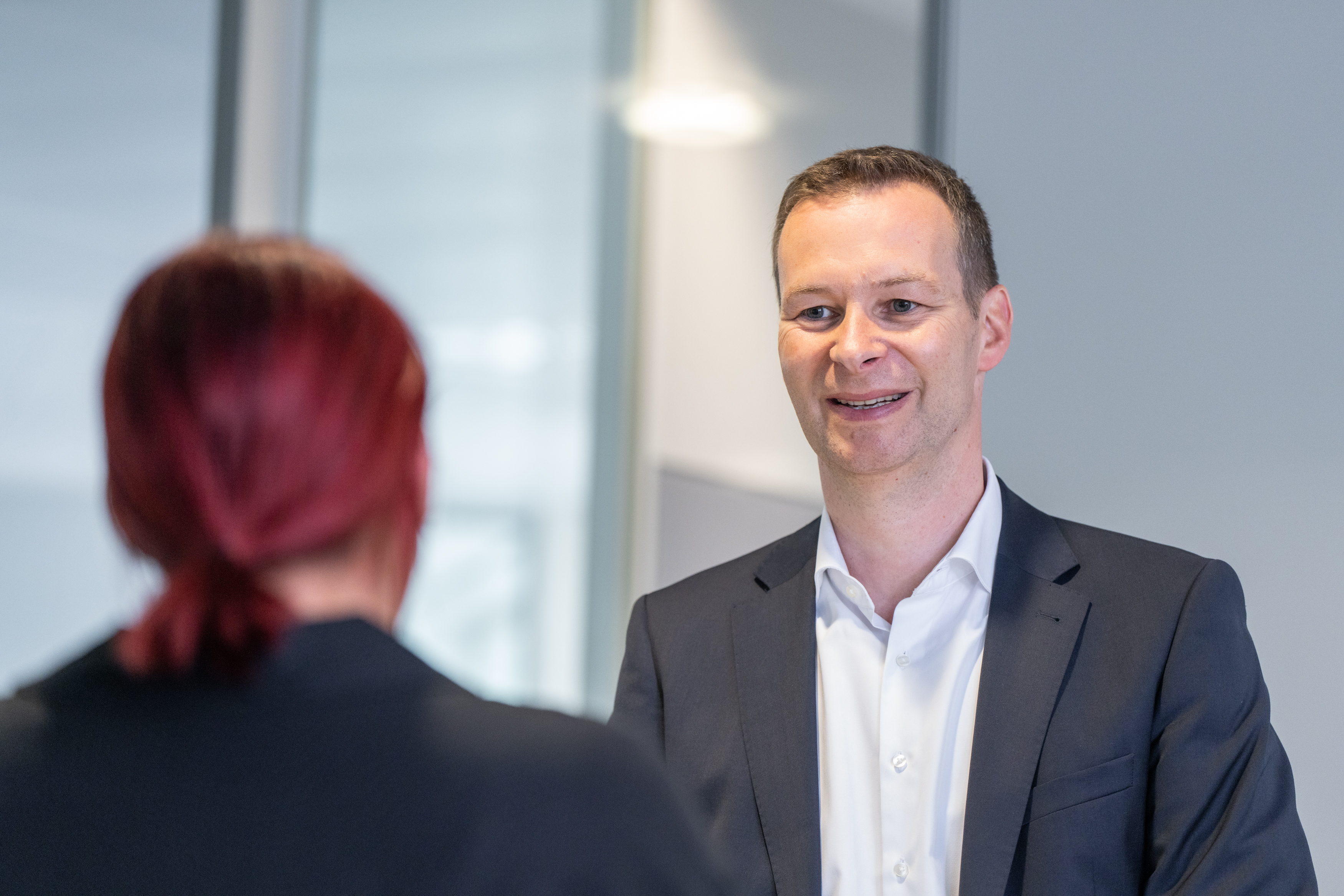
Policy impulse
“The hydrogen core grid is a giant step for the energy transition and for OGE”
OGE’s new CEO Dr Thomas Hüwener on starting in his new role, the approval of the core grid and the transformation of OGE
Thomas Hüwener has been CEO of OGE since 1 July 2024, replacing his predecessor Jörg Bergmann, who retired after 16 years as part of our executive management team. Thomas Hüwener has held various positions at OGE and its predecessor companies since 2001 and has been a member of the management board for the last 11 years.
With his many years of experience and expertise, Thomas Hüwener knows OGE as well as few others and is ideally equipped to lead OGE into the future. A future that will primarily involve the transformation of the company. From natural gas transport to the transport of hydrogen and CO2 towards a climate-neutral future. Sounds exciting! That’s why we want to learn more about it.
You have now been CEO of OGE for almost four months. How did the early days feel?
The first few months were intense and eventful. A lot of it was new territory for me, too. But thanks to a very good handover from my predecessor, I was able to get up to speed quickly. Of course, there were many new impressions and challenges – I found this phase to be very enriching. The complexity of our tasks, especially in the context of the energy transition, is enormous, but also extremely exciting. I look forward to what lies ahead and feel well prepared.

The energy industry is undergoing a transformation. What path is OGE taking in the green transformation?
The energy transition requires us to change course. OGE is focusing on expanding hydrogen and CO₂ infrastructure to support decarbonisation. The hydrogen grid is being developed step by step from our natural gas network and with new builds. We are building a completely new pipeline system for CO2.
But one thing is important to me to emphasise: natural gas will continue to play an important role for years to come. Here we stand for security of supply, but at the same time we will also use the broad expertise we have gained with natural gas for future business areas.
Hydrogen and carbon management will play an important role in the energy transition and at OGE. Can a natural gas network operator simply say: “Now we’re going to do things very differently”?
A change like that is complex and requires a well-thought-out strategy that is supported by everyone in the company and especially by our owners. That is the case with us.
In my view, the transformation presents a wide range of challenges, including not only technological but also regulatory and financial issues. For example, with the hydrogen core network, we are making the largest investment in the company's history. And this in a market that is still emerging. Here, we continue to expect support from policymakers in the form of sufficient financial incentives. After all, the project of climate neutrality is a joint effort.
In short, we are not doing things completely differently but are building on the skills and experience of our employees and transforming the business step by step. We are combining our decades of experience in gas transmission with innovative approaches in the field of hydrogen and carbon management. This is how we ensure that we are a reliable partner for energy supply not only today but also in the future – while actively contributing to achieving climate targets.
OGE has already started with hydrogen, the H2 core grid has been approved (see also info box). How did the hydrogen core network come about and what needs to happen next?
The hydrogen core grid is a giant step for the energy transition and for OGE. The road was challenging but extremely successful. Over 19 intensive months, we worked closely with policymakers and other TSOs to advance this project. We are laying the foundation for hydrogen transport in Germany here.
For the future of the network, it is important that we have a clear and stable regulatory framework. In my view, financing conditions should also improve again. They are not competitive by international standards and in contrast to other infrastructures such as the electricity grid.
But one thing must also be clear: the core network is just the beginning. We now need to boost hydrogen production and use so that the grid can achieve its full potential.
The hydrogen core grid: a milestone for the energy transition
The final step has been taken: With the confirmation by the Bundesnetzagentur (BNetzA) on 22 October 2024, construction work for the H2 core network can begin. The excavators are ready to turn the vision of a hydrogen infrastructure into reality.
Key data on the H2 core network:
- Total length: 9,040 km
- Investment costs: 18.9 billion euros
- Conversion of existing natural gas pipelines: approx. 60%
The aim is to create a connection between major consumption and production regions for hydrogen in Germany by 2032. OGE plays a central role in the development of the H2 core network.
Further information on the core network can be found on the FNB Gas website.
Finally, where do you see OGE in five years’ time? What long-term goals do you have for the company and what will it take to achieve them?
In five years’ time, we will still be transporting natural gas and we will be in the middle of building the hydrogen core grid. We will also be constructing and commissioning the first CO₂ pipelines. In the long term, we want to successfully implement the transformation of the company and achieve the goal of climate neutrality together for an industrially very well-positioned Germany. In my view, the most important thing for this is to use our many years of expertise in gas transport and a whole host of new, fresh ideas together.
